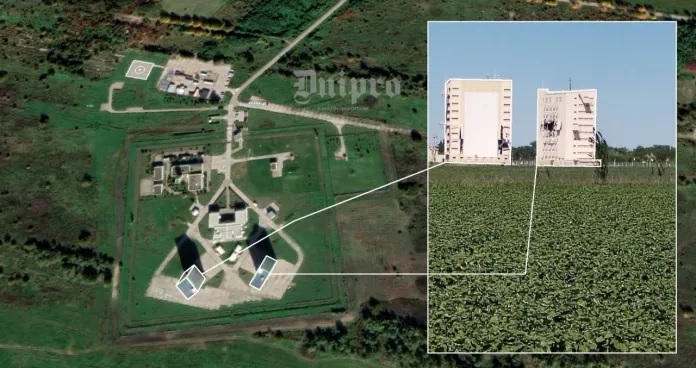Ukrainian Drones Destroy Russian Missile Early Warning Radar

Ukrainian drones destroy critical Russian missile early warning radar near Glubokiy, impacting Russia's defense capabilities and escalating tensions.
On May 22, Ukrainian drones targeted and destroyed a Russian missile early warning radar system, the Voronezh-DM, near the village of Glubokiy in the Krasnodar region. The strike resulted in significant damage to the radar’s phased array antenna systems and two buildings on the grounds of military unit 41003, which houses the 818th Independent Radiotechnical Center.
The Voronezh-DM radar, operational since late 2016, is a critical component of Russia’s missile early warning network. This radar can detect ballistic and hypersonic targets up to 6,000 kilometers away, providing essential data on missile launches to enhance the response capabilities of the Russian Armed Forces. The destruction of this radar represents a strategic loss for Russia, affecting its ability to detect and respond to missile threats.
Images circulating online, particularly via Telegram, show the aftermath of the attack, with visible damage to the radar site. The radar system, located in the Krasnodar Territory, is one of several such systems deployed across Russia to ensure comprehensive missile detection coverage.
The Voronezh-DM radar is part of Russia’s network designed to detect and track missile launches, providing early warning to command centers. The loss of this radar not only hampers Russia’s missile detection abilities but also impacts the broader security infrastructure of the country.
Background on the Voronezh-DM Radar
The Voronezh-DM radar is a high-frequency early warning radar system developed by Russia. It is designed to track missiles and space objects, providing early warning of potential threats. The radar's phased array antenna allows it to monitor a wide area and detect objects at great distances.
The Voronezh-DM radar system is part of Russia's efforts to modernize its missile early warning network, replacing older systems with more advanced technology. The radar in Krasnodar is one of several stations across the country, including locations in Kaliningrad, Irkutsk, and Krasnoyarsk. These systems are vital for Russia's national defense, offering real-time data on missile launches that could threaten the country.
The Ukrainian strike on the Voronezh-DM radar highlights the ongoing conflict between Ukraine and Russia, demonstrating Ukraine’s capability to target strategic military assets within Russian territory. This incident also underscores the evolving nature of modern warfare, where unmanned aerial vehicles (drones) play a significant role in military operations.
Implications of the Radar's Destruction
The destruction of the Voronezh-DM radar could have several implications:
1. Reduced Detection Capability: Russia’s ability to detect incoming missiles in the affected region will be diminished, potentially leaving a gap in its early warning network.
2. Strategic Vulnerability: The loss of this radar makes Russia more vulnerable to missile attacks in the Krasnodar region and surrounding areas.
3. Operational Challenges: Rebuilding or replacing the radar system will require time and resources, during which Russia’s missile detection capabilities will be compromised.
4. Escalation of Conflict: The successful strike by Ukrainian forces may lead to further escalations in the conflict, with potential retaliatory actions from Russia.
The attack on the Voronezh-DM radar near Glubokiy is a significant event in the ongoing conflict between Ukraine and Russia, illustrating the strategic use of drone technology in modern warfare and its impact on national security infrastructure.


